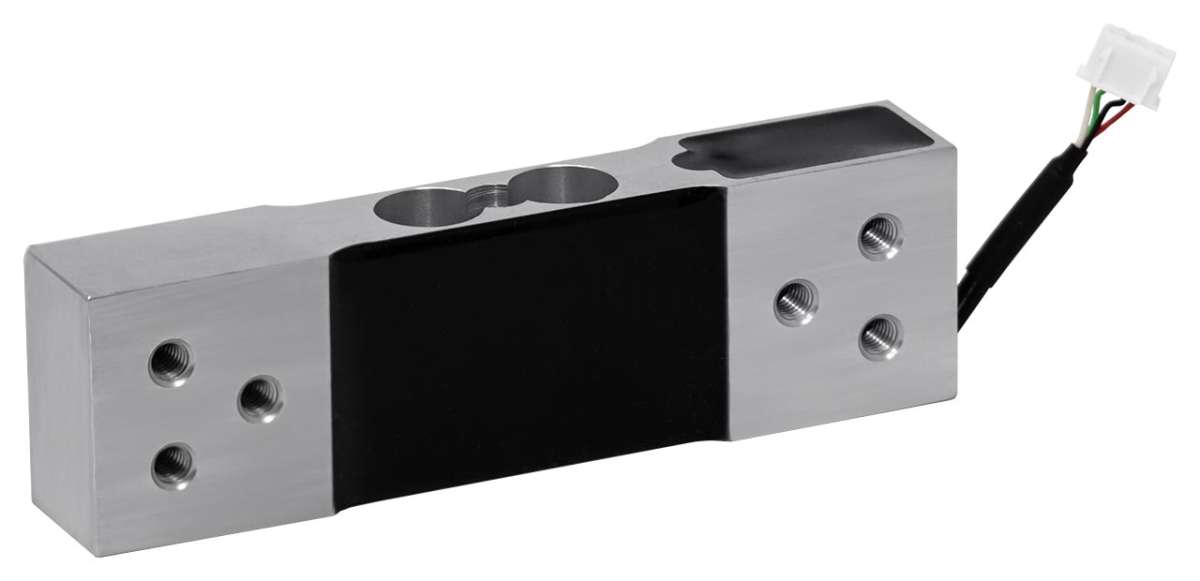What is a Digital Load Cell?
In contrast to regular load cells that output an analog signal and require an additional evaluation unit, digital load cells convert the measured weight into a digital signal through a built-in A/D converter. This digital signal can then be processed, analyzed, and read directly by computers, control systems, or other electronic devices.

Digital load cells typically consist of a load cell that absorbs the mechanical load from the weight and an integrated signal amplifier that amplifies and digitizes the load cell's signal. The digital signal can be output through various interfaces such as USB, RS-232, RS-485, or Ethernet, allowing for easy integration into different systems.
Another important aspect of digital load cells is their communication and data acquisition capabilities. They can often be connected to software or programming interfaces to capture, store, and analyze measurement data. This enables integration into monitoring systems, databases, or automated control processes.
Digital load cells offer various benefits, including higher accuracy, easy calibration, versatility, and enhanced features. They are commonly used in industrial applications that require precise weight measurements and rapid data acquisition, such as in industries, trade, laboratories, and other environments.
What are the Benefits of Digital Load Cells?
Precision: Digital load cells generally provide higher accuracy and precision in weight measurement. They can detect smaller weight changes and deliver more accurate readings.
Digital Output: Unlike analog load cells that produce analog signals, digital load cells provide digital outputs. This enables easier integration with digital systems and direct transmission of measurement data to computer systems or other electronic devices.
Easy Calibration: Digital load cells can typically be calibrated more easily than analog load cells. Calibration can be done directly through an interface or software, simplifying the process and saving time.
Versatility: Digital load cells often offer more flexibility and versatility in terms of their application possibilities. They can be connected to different types of measuring devices and control systems and are usually compatible with a wide range of applications.
Additional Features: Digital load cells can offer additional features beyond just weight measurement. For instance, they might include built-in temperature or humidity sensors that can correct or adjust measurements.
Data Acquisition and Processing: Digital load cells allow for easy and rapid capture of measurement data. This data can then be processed, analyzed in real-time, and utilized for further applications, such as automatic control systems or quality control processes.
How Do Digital Load Cells Work?
Digital load cells consist of a load cell that absorbs the mechanical load from the weight and an integrated signal amplifier that amplifies and directly converts the load cell's analog signal into a digital signal (Analog-to-Digital Converter). The digital signal is output through various interfaces and can be processed by computers or other electronic devices.

How to Calibrate a Digital Load Cell?
The calibration of a digital load cell can vary depending on the model. Typically, calibration is done through an interface or software that allows adjusting the load cell to a known weight or reference.
What Data Can Be Captured with Digital Load Cells?
Digital load cells can capture weight data. Depending on the model, they may also capture additional information such as temperature or humidity.
How to Integrate Digital Load Cells into a System?
Digital load cells can be integrated into a system through various interfaces such as USB, RS-232, RS-485, or Ethernet. The exact process depends on the model and system requirements.
Which Applications Benefit from Digital Load Cells?
Digital load cells find application in various industrial sectors, including production lines, warehousing, quality control, laboratory work, and trade. They are often used in filling systems, differential dosing scales, or checkweighers.





